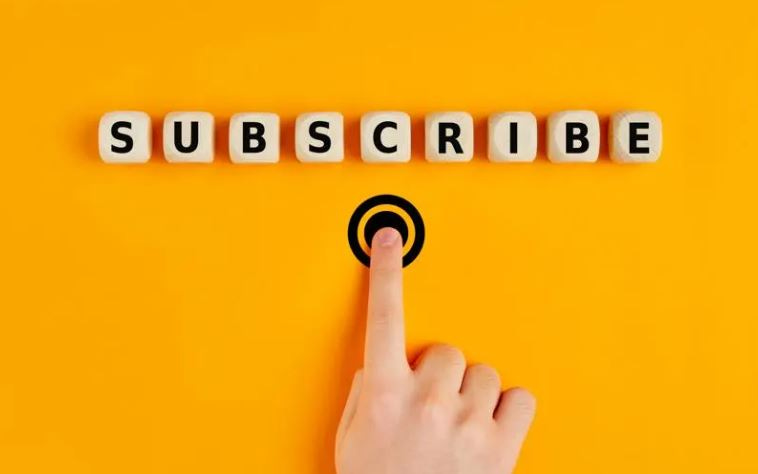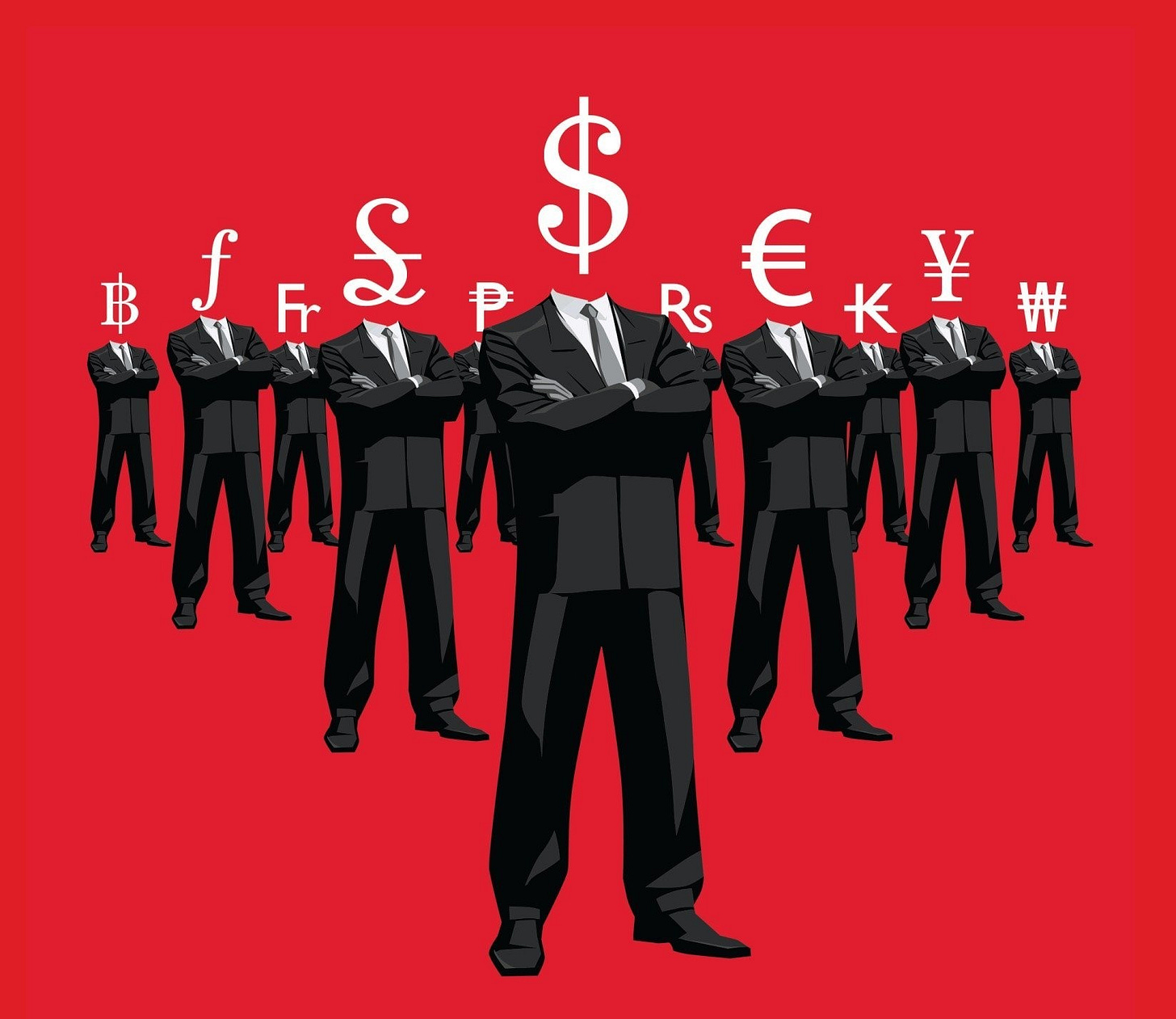There’s a certain comfort in the familiar click of the “Subscribe” button, signing a contract with a faceless entity for the promise of something more. This is the world we live in now, a world where the steady drip of monthly fees has become the soundtrack to our lives, where access was supposed to replace ownership. But as I sit here, scrolling through the endless parade of subscriptions that have found their way into my life—movies, music, supplements —I can’t help but think of a time when life was full of surprises—moments of spontaneity that broke the monotony of the everyday. You might stumble upon a new book in a second-hand shop, hear a song on the radio that stayed with you for days, or decide on a whim to try a new restaurant because it just felt right. That kind of serendipity is fading, reserved for holidays or fleeting pockets of impulse, replaced instead by something more curated and more controlled.
Welcome to the subscription economy, where even our most unplanned moments are now planned for us, packaged neatly into monthly fees, and delivered on schedule.
I wonder how we got here, what it says about the society we’ve built, and how this seemingly small act of surrender will continue to play out.
The Origins: A New Currency of Consumption
The subscription model didn’t just emerge out of nowhere; it’s the product of a broader shift in consumer culture, driven by digitalisation and where the desire for instant gratification has become the new holy grail. As tech giants like Amazon and Netflix have risen to dominance, they’ve redefined what it means to consume.
In 2020, the global subscription market was valued at USD 72.9 billion, and is projected to grow at a rate of 68% by 2028. In the Global North, where disposable income is higher, the subscription economy has thrived. It’s not just about entertainment—though with over 238 million Netflix subscribers in 2023 and 226 million paying Spotify users, that’s certainly a big part of it.
It’s also about convenience, about curating a life that feels personalised, streamlined, and (supposedly) free from the clutter of physical goods. We wanted convenience, flexibility, the ability to dip in and out of experiences without the burden of commitment. And so, companies adapted, offering us a new way to consume—a way that felt lighter, easier, more aligned with the fast-paced, ever-changing lives we were living. But this drive for convenience came at a cost—both financially and mentally.
Life on Autopilot
Netflix knows what you want to watch next, Spotify predicts your new favourite song, and your next meal is already waiting in a box on your doorstep, courtesy of Gousto or HelloFresh. These services promise convenience, but what they’re really doing is scripting our lives, one subscription at a time. We’re losing the joy of discovery, the thrill of the unexpected, as algorithms increasingly dictate our choices. The randomness of life is being ironed out, smoothed into predictable patterns that leave little room for the unplanned.
In the UK, where the average household now spends over £552 a year on digital subscriptions alone, we’re buying into a lifestyle of curated experiences.
But what we’re also buying into is a life where our next move is always anticipated. The spontaneity that once made life rich and unpredictable is being replaced by a series of pre-selected options, each one more calculated than the last.
The Illusion of Choice
Take something as seemingly liberating as a subscription to ClassPass, which offers access to gyms and fitness classes across the UK. On the surface, it’s a way to try new things, to stay active and healthy. But even here, your choices are constrained by what’s available in the network, by the credits you have, by the time slots that fit your schedule. It’s freedom with limits, spontaneity with strings attached.
As these services become more ingrained in our lives, the boundaries of our freedom shrink further. We’re no longer making decisions based on what we truly want or need in the moment; we’re making decisions based on what’s been pre-packaged for us. It’s a subtle shift, but one that erodes our ability to act freely and to make choices that are truly our own.
Psychological and Behavioural Factors
Perceived Value: Subscriptions often leverage perceived value, offering a steady stream of new content or features that can justify the cost in the minds of users. However, this perceived value may not always translate to actual savings. Ultimately, the question of whether subscriptions actually cut down costs for users is complex and can vary depending on several factors, including the type of subscription, user behaviour, and the specific industry involved. Although, one common trend is that subscription services often attract users with low introductory prices but increase fees over time. For instance, many streaming services have gradually raised their prices as they expand their content libraries and market dominance.
Subscription Fatigue: As users subscribe to more services, they may experience subscription fatigue. There’s an excess of choice, of information, of things to watch, read, listen to—so much that it all starts to blur together, leaving us feeling both overstimulated and empty. We’re consuming more than ever, yet there’s this undercurrent of dissatisfaction, as if we’re always reaching for something just out of grasp.
Overproduction: What could have helped streamline the problem of excess has, ironically, led us right back to it. The subscription model has fuelled a new kind of overproduction. Streaming platforms churn out content at breakneck speed—Netflix, for instance, released over 1,500 original titles in 2022 — while subscription boxes fill our shelves, and even the food we eat is delivered in abundance, often more than we can consume. The top rating categories consistently fall under digital content and media, and consumer electronics and gadgets. The more we subscribe, the more is produced, and the cycle continues; a relentless march of supply to meet the artificial demand.
Closing Thoughts
There’s a strange intimacy in the act of subscribing. It’s a choice, after all - a decision to let something into your life, to let it occupy space in your mind and your routines. We carefully curate our subscriptions hoping that the things we choose to pay for reflect who we are or who we want to be. Subscriptions feel easy, manageable, like you’re in control.
But beneath this convenience lies something more insidious—a way for corporations to monopolise our time, to take the hours we’re already losing to work and sell them back to us, piece by piece.
They promise relief from the exhaustion. The kind that seeps into your bones after years of navigating a world that constantly demands more from you—more time, more energy, more money.
Yet, I would argue what they really offer is a way to fill the time we barely have, a balm for the collapse that comes from being overworked and underpaid. We’re subscribing to the illusion of ease, but the cost is higher than the monthly fees we’re charged—it’s our time, our attention, our very selves.
This is the world we’re moving towards—a world where the randomness of life is engineered out of existence, replaced by a predictable, controlled version of reality. It’s a world where serendipity becomes a relic of the past, where the joy of the unexpected is sacrificed for the convenience of the known.
*As a final note, the subscription economy was built for the middle class. In a country where 14 million people live in poverty, the subscription economy is a stark reminder of the inequalities that pervade British society. For many, the idea of spending money on streaming services, meal kits, or subscription flowers is unimaginable. These services, marketed as ways to improve our quality of life, are only accessible to those who have the disposable income—and the time—to enjoy them.
In Part 2 I look to briefly explore if and how the subscription economy varies depending on where you are in the world.
Thank you for reading Threads of Thought. This work is a labour of love, offered freely to all. If you feel you learnt something or feel moved to support my creative journey, you can donate below. Your support for my craft is deeply appreciated.








This was really thought provoking. The subscription model is used everywhere now, and though it feels like it’s a convenience to us it is of course purely a recurring revenue play to lock customers in and reduce repeat marketing spend.
I think your connection to a loss of serendipity is particularly interesting. Once you’ve paid for a subscription you want to get the most you can from it, reducing scope for exploration. For example, an Amazon Prime subscription destroys the need for many kinds of shopping that would previously have been a source of discovery and even joy: now a button click. Convenience and isolation are replacing wonder and community at a societal level.
Like an all you can eat buffet, once we’re paid in we want to squeeze as much as possible out. Just as over production occurs on the supply side, we’re trying to squeeze all the value we can out of our subscriptions, often without much residual value to our lives.
Do you think “conscious consumption” has a place in the digital, all you can eat world?
What are your views on physical subscriptions?
I’ve tended to view these as generally positive, minimalist, anti-materialist. For example Zip-car, Lime bikes etc. However your point about digital curation and predictability struck a chord here too. In return for not owning stuff, are we letting corporations own a bit of us instead?
Lastly, AI is coming imminently to the supply side of digital subscription feeds. What do you think it means for humanity to have machines produce content designed to elicit emotion from us for profit? Does it cease to be art and become pure manipulation?
Thanks once again, really interesting insights!